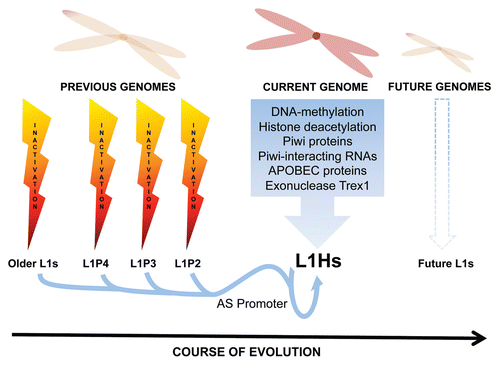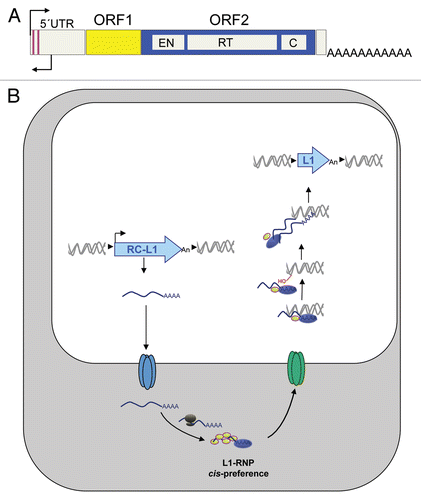Figures & data
Figure 1 Co-evolution of L1s and the human genome. The illustration represents the co-evolution between LINE-1 and the human genome, showing the inactivated L1s neutralized by previous human genomes. Notably, the L1-AS promoter is conserved through LINE-1 evolution. Also shown are currently known L1 control mechanisms, which obligates L1 to evolve to avoid extinction in the human genome.

Figure 2 LINE-1 retrotransposition. (A) Scheme of an RC-L1. In the scheme, ORF1 and ORF2 are represented as yellow and blue rectangles. Within ORF2, the relative position of the EN, RT and cysteine-rich domains (C) is indicated. Also shown are the S and AS promoters in the L1 5′UTR (black thin arrows). (B) Working model of L1 retrotransposition. In the scheme, for simplicity L1 is drawn as a light blue arrow. Details can be found in the main text.
